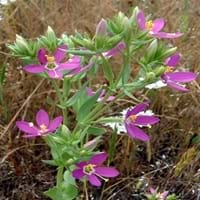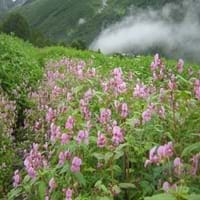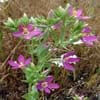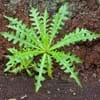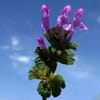Life Span
Perennial
Annual or Biennial
Type
Herbs, Perennial
Flowering Plants
Origin
Mexico, Latin America and the Caribbean, Central America, South America
Northeastern United States, North-Central United States, Canada
Types
Not Available
Not Available
Habitat
Mountains
Dry areas, Rocky areas
USDA Hardiness Zone
Not Available
2-7
AHS Heat Zone
Not Available
7 - 1
Sunset Zone
Not Available
21,22
Habit
Clump-Forming
Clump-Forming
Flower Color
White
Yellow, Pink
Flower Color Modifier
Bicolor
Bicolor
Fruit Color
Not Available
Non Fruiting Plant
Leaf Color in Spring
Green, Light Green, Dark Green
Blue Green
Leaf Color in Summer
Green, Light Green, Dark Green
Blue Green
Leaf Color in Fall
Green, Light Green, Dark Green
Blue Green
Leaf Color in Winter
Light Green
Light Green
Leaf Shape
Narrow Oblong
Pinnate
Plant Season
Summer, Fall
Summer, Fall
Sunlight
Full Sun, Partial Sun
Full Sun, Partial Sun
Growth Rate
Very Fast
Fast
Type of Soil
Clay, Loam, Sand
Loam, Sand
The pH of Soil
Acidic, Neutral, Alkaline
Acidic, Neutral, Alkaline
Soil Drainage
Well drained
Well drained
Bloom Time
Indeterminate
Early Summer, Summer, Late Summer, Early Fall
Tolerances
Drought
Not Available
Where to Plant?
Container, Ground
Container, Ground
How to Plant?
Seedlings, Stem Planting
Seedlings
Plant Maintenance
Medium
Medium
Watering Requirements
Never Over-water, Requires watering in the growing season, Water Deeply
Do Not over Water, Keep ground moist, Never Over-water, Requires regular watering
In Summer
Lots of watering
Lots of watering
In Spring
Moderate
Moderate
In Winter
Average Water
Average Water
Soil pH
Acidic, Alkaline, Neutral
Acidic, Neutral, Alkaline
Soil Type
Well drained
Loam, Sand
Soil Drainage Capacity
Well drained
Well drained
Sun Exposure
Full Sun, Partial Sun
Full Sun, Partial Sun
Pruning
Remove damaged leaves, Remove dead branches, Remove dead leaves
Remove damaged leaves, Remove dead leaves
Fertilizers
All-Purpose Liquid Fertilizer, fertilize in fall, fertilize in growing season, fertilize in spring, Water soluble fertilizers
fertilize in early summer, fertilize in growing season, fertilize in spring
Pests and Diseases
Red blotch
Insects
Plant Tolerance
Drought
Drought
Flower Petal Number
Single
Single
Foliage Texture
Fine
Fine
Foliage Sheen
Matte
Matte
Attracts
Flying insects, Not Available
Butterflies, Insects
Allergy
no allergic reactions
Corydalis
Aesthetic Uses
Beautification, Bouquets, Landscape Designing, Showy Purposes
Beautification, Showy Purposes
Beauty Benefits
Improve skin condition
Not Available
Environmental Uses
Air purification, Food for insects, soil erosion prevension on hill slopes
Air purification, Food for insects
Medicinal Uses
Diarrhea, Eczema, Indigestion, Malaria, Respiratory Disorders, Stomach pain, Weight loss
Sedative
Part of Plant Used
Whole plant
Flowers
Other Uses
Can be made into a herbal tea, Decoration Purposes, Employed in herbal medicine, Showy Purposes, Used as Ornamental plant
Decoration Purposes, Showy Purposes, Used as Ornamental plant
Used As Indoor Plant
No
No
Used As Outdoor Plant
Yes
Yes
Garden Design
Edible
Mixed Border, Rock Garden / Wall, Wildflower
Botanical Name
EUPHORBIA hypericifolia
CORYDALIS sempervirens
Common Name
Canchalagua, Hypericum-leaved Spurge, Leche-leche
Colic Weed, Pale Fumewort, Pale Corydalis
In Hindi
Canchalagua
Capnoides
In German
Canchalagua
Capnoides
In French
canchalangua
capnoides
In Spanish
canchalagua
Capnoides
In Greek
Canchalagua
Capnoides
In Portuguese
Canchalagua
Capnoides
In Polish
Canchalagua
Capnoides
In Latin
Canchalagua
capnoides
Phylum
Spermatophyta
Basidiomycota
Class
Dicotyledonae
Agaricomycetes
Order
Euphorbiales
Agaricales
Family
Acanthaceae
Fumariaceae
Genus
Euphorbia
Hypholoma
Clade
Not Available
Angiosperms, Eudicots
Tribe
Not Available
Fumarieae
Subfamily
Not Available
Fumarioideae
Number of Species
Not Available
Difference Between Canchalagua and Capnoides
If you are confused whether Canchalagua or Capnoides are same, here are some features about those plants to help you choose better. Many people think that these two plants have the same characteristics, but one can see Canchalagua and Capnoides Information and learn more about it. Fertilizers required for proper growth of Canchalagua are All-Purpose Liquid Fertilizer, fertilize in fall, fertilize in growing season, fertilize in spring and Water soluble fertilizers, whereas for Capnoides fertilizers required are fertilize in early summer, fertilize in growing season and fertilize in spring. Hence, one should know the basic difference between Canchalagua and Capnoides if you are planning to have them in your garden to enhance its beauty.
<
Flowering PlantsImportance of Canchalagua and Capnoides
Want to have the most appropriate plant for your garden? You might want to know the importance of Canchalagua and Capnoides. Basically, these two plants vary in many aspects. Compare Canchalagua and Capnoides as they differ in many characteristics such as their life, care, benefits, facts, etc. Every gardener must at least have the slightest clue about the plants he wants to plant in his garden. Compare their benefits, which differ in many ways like facts and uses. The medicinal use of Canchalagua is Diarrhea, Eczema, Indigestion, Malaria, Respiratory Disorders, Stomach pain and Weight loss whereas of Capnoides is Sedative. Canchalagua has beauty benefits as follows: Improve skin condition while Capnoides has beauty benefits as follows: Improve skin condition.
Compare Facts of Canchalagua vs Capnoides
How to choose the best garden plant for your garden depending upon its facts? Here garden plant comparison will help you to solve this query. Compare the facts of Canchalagua vs Capnoides and know which one to choose. As garden plants have benefits and other uses, allergy is also a major drawback of plants for some people. Allergic reactions of Canchalagua are no allergic reactions whereas of Capnoides have Corydalis respectively. Having a fruit bearing plant in your garden can be a plus point of your garden. Canchalagua has no showy fruits and Capnoides has no showy fruits. Also Canchalagua is not flowering and Capnoides is not flowering . You can compare Canchalagua and Capnoides facts and facts of other plants too.
